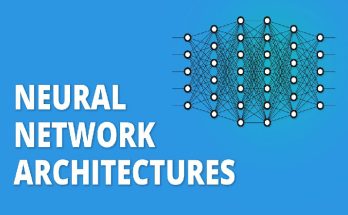Unraveling the Distinctions Between Open Caption vs Closed Caption
Here we will find the distinction between Open Caption vs Closed Caption. In an era marked by digital content consumption, the role of captions in enhancing accessibility and engagement cannot be overstated. As we explore the captivating world of captions, it’s essential to understand the distinctions between two prominent types: open captions and closed captions. This article delves into the nuances, applications, and implications of open and closed captions in diverse media landscapes.

Understanding Open Caption: A Visible Narrative Unveiled
What Are Open Captions?
Open captions are text elements that are permanently embedded in the visual content of a video or film. Unlike closed captions, which can be turned on or off by the viewer, open captions are always visible, ensuring that every audience member has access to the textual representation of spoken dialogue and other auditory elements.
Integration in Production
Open captions are typically added during the post-production phase of video content creation. This involves editing the text directly onto the video frames, creating a seamless integration of the visual and textual elements. This method ensures that the captions are an integral part of the video and cannot be disabled by the viewer.
Closed Caption: Customizable Accessibility at Your Fingertips
Defining Closed Caption
Closed captions, on the other hand, offer viewers the flexibility to enable or disable the text overlay. These captions are stored separately from the video and can be turned on or off through the viewer’s settings. Closed captions provide a level of customization that caters to individual preferences and accessibility needs.
Dynamic Accessibility
The dynamic nature of closed captions makes them a versatile tool for enhancing accessibility. Viewers can adjust the appearance, size, and even the color of the text to suit their preferences. This customization is particularly valuable for individuals with specific visual preferences or those who require adjustments for optimal readability.
Accessibility: The Common Ground
Equalizing the Viewing Experience
Both open and closed captions share a common goal: to make media content accessible to a broader audience. By providing a textual representation of spoken content, captions bridge the gap for individuals who are deaf or hard of hearing, as well as those who may benefit from reading along with the audio.
Inclusive Design Principles
In the realm of accessibility, both open and closed captions adhere to inclusive design principles. They go beyond catering to specific needs and contribute to creating an inclusive viewing experience for individuals with diverse abilities, ensuring that content is comprehensible and enjoyable for all.
Use Cases: Tailoring Captions to Content and Context
Open Captions in Cinemas
pen captions find extensive use in cinema settings, where the text is permanently embedded in the film itself. This approach ensures that all viewers, regardless of their hearing abilities, can fully engage with the narrative. Open captions are especially valuable in film festivals, special screenings, or educational environments where accessibility is prioritized.
Closed Captions in Online Videos
Closed captions have become a staple in the realm of online videos, including streaming platforms, social media, and educational content. The flexibility of closed captions allows viewers to toggle them on or off, accommodating a wide range of preferences and needs. This adaptability is particularly advantageous in the diverse landscape of online content consumption.
Legal Compliance and Standards
Legal Mandates for Captioning
The incorporation of captions is not merely a matter of convenience but often a legal requirement. Various countries and regions have regulations in place mandating the provision of captions for certain types of content, especially in broadcast television and online streaming services. Compliance with these regulations ensures that content creators adhere to accessibility standards and provide an inclusive viewing experience.
Standards for Caption Quality
Both open and closed captions are subject to standards that dictate their quality. These standards encompass factors such as accuracy, synchronicity with spoken dialogue, proper formatting, and readability. Adhering to these standards ensures that captions fulfill their intended purpose effectively.
User Experience: Balancing Aesthetics and Functionality
Aesthetic Considerations of Open Captions
Open captions, being an integral part of the visual content, are subject to aesthetic considerations. Content creators must strike a balance between the readability of the text and its integration into the overall visual design. Thoughtful placement, font choices, and timing contribute to an immersive and visually pleasing experience.
Customization Options for Closed Captions
Closed captions provide a canvas for user customization. Viewers can tailor the appearance of closed captions to suit their preferences, ensuring that the text is legible and complements their viewing experience. This level of customization acknowledges the diverse needs and preferences of the audience.
Technological Advancements: AI and Captioning
AI-Powered Captioning Solutions
Advancements in artificial intelligence have brought about innovative captioning solutions. AI-powered algorithms can automatically generate captions, enhancing the efficiency of the captioning process. This technology contributes to the scalability of captioning efforts, especially in environments where a large volume of content requires captioning.
Challenges and Considerations
While AI presents promising opportunities for captioning, challenges such as accuracy, contextual understanding, and sensitivity to diverse linguistic nuances remain. Striking a balance between the speed and efficiency of AI-driven captioning and the precision required for accurate representation poses ongoing challenges in the technological landscape.
Conclusion: Fostering Inclusivity Through Captioning Choices
The choice between open and closed captions involves considerations of accessibility, user experience, and the specific context of content consumption. Open captions, seamlessly integrated into the visual narrative, cater to specific scenarios like cinemas and special screenings. Closed captions, with their customizable features, dominate the online content landscape, offering viewers the flexibility to tailor their viewing experience. Whether permanently embedded or dynamically toggled, captions, in their various forms, serve as powerful tools in fostering inclusivity and ensuring that the beauty of storytelling reaches every corner of the diverse audience spectrum.



